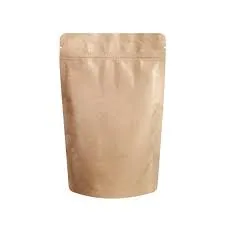- Afrikaans
- Albanian
- Amharic
- Arabic
- Armenian
- Azerbaijani
- Basque
- Belarusian
- Bengali
- Bosnian
- Bulgarian
- Catalan
- Cebuano
- chinese_simplified
- chinese_traditional
- Corsican
- Croatian
- Czech
- Danish
- Dutch
- English
- Esperanto
- Estonian
- Finnish
- French
- Frisian
- Galician
- Georgian
- German
- Greek
- Gujarati
- haitian_creole
- hausa
- hawaiian
- Hebrew
- Hindi
- Miao
- Hungarian
- Icelandic
- igbo
- Indonesian
- irish
- Italian
- Japanese
- Javanese
- Kannada
- kazakh
- Khmer
- Rwandese
- Korean
- Kurdish
- Kyrgyz
- Lao
- Latin
- Latvian
- Lithuanian
- Luxembourgish
- Macedonian
- Malgashi
- Malay
- Malayalam
- Maltese
- Maori
- Marathi
- Mongolian
- Myanmar
- Nepali
- Norwegian
- Norwegian
- Occitan
- Pashto
- Persian
- Polish
- Portuguese
- Punjabi
- Romanian
- Russian
- Samoan
- scottish-gaelic
- Serbian
- Sesotho
- Shona
- Sindhi
- Sinhala
- Slovak
- Slovenian
- Somali
- Spanish
- Sundanese
- Swahili
- Swedish
- Tagalog
- Tajik
- Tamil
- Tatar
- Telugu
- Thai
- Turkish
- Turkmen
- Ukrainian
- Urdu
- Uighur
- Uzbek
- Vietnamese
- Welsh
- Bantu
- Yiddish
- Yoruba
- Zulu
do you measure width or length first
Do You Measure Width or Length First?
When it comes to measuring objects, many of us can relate to the frustration of getting it wrong. Whether you’re a DIY enthusiast tackling home improvement projects, a designer crafting beautiful spaces, or simply someone trying to make sense of dimensions for a new piece of furniture, understanding the order of measurement—whether to measure width or length first—can make all the difference. This article explores the implications of choosing one over the other and offers guidance on best practices.
Understanding Dimensions
Before delving into the question of measurement order, it’s essential to understand what we mean by width and length. Typically, length refers to the longer side of an object, while width denotes its shorter side. This convention holds true in various contexts, such as furniture design, construction, and artwork. However, dimensions can sometimes vary based on the context—what might be considered width in one scenario could be seen as length in another.
The Importance of Context
One of the key factors in determining whether to measure width or length first is the context of the task at hand. For example, when measuring a piece of furniture, it is generally more logical to measure the length first, as it often dictates how the piece will fit and function within a space. In contrast, when measuring for curtains or blinds, width may take precedence, as it directly impacts coverage and aesthetics.
In architecture or interior design, width and length are often subjective and can vary based on the layout of a room. In such cases, professionals might opt to measure from specific reference points, like walls or existing furniture, to decide which dimension to tackle first. For individuals without a design background, this might be a crucial aspect to consider, as it can affect the final outcome.
Industry Standards and Practices
Many industries have established conventions regarding the order of measurement. For example, in construction, the length is often measured first, followed by the width. This standardization helps professionals communicate effectively and reduces the likelihood of errors. Similarly, in the world of textiles, width is frequently measured first when dealing with fabric, particularly if the intention is to gauge how the material will drape or cover an area.
do you measure width or length first

It’s beneficial for DIY enthusiasts and hobbyists to familiarize themselves with these conventions. By adopting industry standards, individuals can make their projects more professional and reduce the chances of mistakes, which can be both costly and time-consuming.
Practical Tips for Measuring
1. Have the Right Tools Always use appropriate measuring tools like a tape measure, ruler, or square. This ensures accuracy and precision.
2. Measure Twice A common adage is to measure twice, cut once. This applies equally to measurement in general. If you’re unsure which dimension to measure first, it’s helpful to take both measurements one after the other.
3. Consider the Space Before measuring, visualize or sketch the space or the object. Understanding the context helps in deciding which dimension might be most important.
4. Label Measurements When working on a project with multiple dimensions, label your measurements clearly. This aids in clarity and prevents confusion later on.
Conclusion
In summary, whether to measure width or length first depends largely on the context and the project you’re working on. Understanding the conventions of the industry can further guide your decision. While there’s no one-size-fits-all approach, being mindful of the dimensions you’re dealing with can lead to better outcomes in any task. As you embark on your next project, remember the significance of these seemingly simple choices, and let them pave the way for success.













